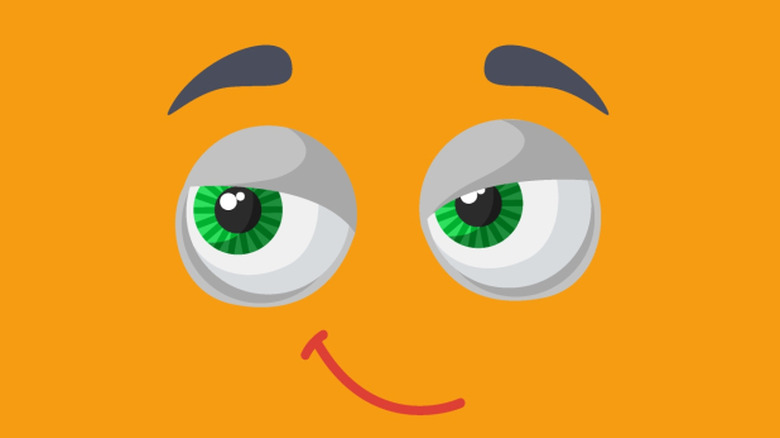How To Tell When Someone's Smile Is Fake
A smile is just a smile, right? Actually, there are 18 different kinds of smiles that, according to clinical psychologist Paul Ekman, are unforced reactions that convey emotions — mainly positive ones, such as enjoyment. However, these aren't the only smiles that have been identified since he (in collaboration with others) started his research on expressions in 1967. That's because people use false or fake smiles when they lie.
It's important to first point out that the lies hidden behind false smiles aren't necessarily of a malicious nature. Rather, people use them as a mask for negative emotions — such as anger, fear, and distress — so that others around them are convinced that they are happy. In fact, Ekman started researching facial expressions after he discovered that the participating patients in his clinical cases lied about their emotional health, saying they weren't depressed and later committing suicide. After reviewing video recordings, he noticed micro facial expressions indicating their negative feelings.
In Ekman's book "Telling Lies: Clues to Deceit in the Marketplace, Politics, and Marriage," he explains that people put on a smile mask for a couple of reasons. One is because some kind of signal of happiness is necessary for a lie to be successful. Another is because a happy smile has become a standard greeting to indicate politeness, and it's only inappropriate to show happiness in bleak situations. In any case, it's unrelated to the obscure phenomenon alexithymia, which can cause people trouble with expressing emotions.
Characteristics of a false or fake smile
Identifying that someone is using a false smile to cover up their true feelings can be difficult because it can have some of the same characteristics as a smile of true enjoyment (also known as a Duchenne smile). Dr. Ekman explains that, in general, it starts with the zygomatic major muscle — which stretches up from the corner of each side of the lips toward the cheekbones. A genuine, uncontrolled smile will make this muscle contract, extending the lips while pulling the cheeks upward to make the skin — which you wouldn't think is the largest organ — gather under the eyes and wrinkle at the eye corners. The eyebrows and eye cover fold (the skin between the upper eyelid and brow) can slightly lower as well.
While the zygomatic major muscle also contracts with a false smile, it won't have the same effects on the cheeks and the skin around the eyes and eyebrows — especially if it's intentionally made broad for the purpose of deceit. The smile itself is typically more asymmetrical, too. And, if the individual is using it to mask their true emotions, only the lower facial muscles will contract — although maybe not completely. You're also likely to still see indications of distress or fear on the forehead. On top of these differences in how the facial muscles contract and change the expression, a false smile could disappear in stages or abruptly rather than flow with natural feelings.
Further research into detecting liars through facial expressions
Smile patterns are just one way researchers have been able to detect when people are lying. Beyond Dr. Ekman's research, for instance, a 2012 study published in Evolution and Human Behavior analyzed video footage of individuals' facial expressions while pleading to the public to return a missing relative. The scientists determined that the corrugator supercilii and depressor anguli oris (muscles associated with grief expressions) activated more often in genuinely grieving pleaders' faces. Meanwhile, the zygomatic major slightly contracted and the frontalis (the muscle affiliated with sad expressions) fully contracted more often among the deceivers.
However, looking for these characteristics in false smiles may not be a foolproof way to detect that someone is lying. Researchers at the University of Rochester have used artificial intelligence to make discoveries by reading data — more specifically machine learning. Of the five smile-related faces detected with this method, a high intensity version of the Duchenne smile correlated with lying most often.
This finding is consistent with Ekman's theory of "duping delight" — discussed in his aforementioned Telling Lies book. In the text, he describes this emotion as a positive feeling — whether it's excitement in anticipation of deceiving or a sense of accomplishment or relief after successfully getting away with it. Ph.D. student Tay Sen simplifies the duping delight theory in a statement as "when you're fooling someone, you tend to take delight in it." Although not all the time, duping delight can be so overwhelming that it leaks through to behavioral changes — from increasing the challenge or risk to giving a full confession.


